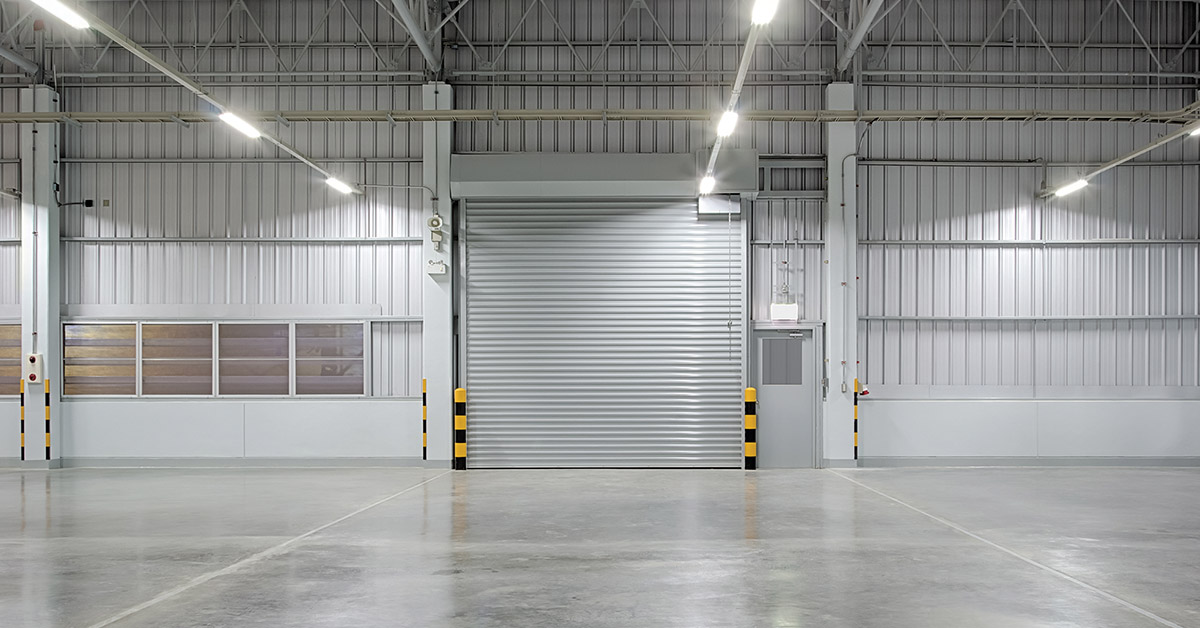Cushman & Wakefield recently reported that about 45 million square feet of U.S. industrial space had been absorbed in the second quarter of 2023. That number was down a whopping 64% from second-quarter 2022 and down 37% from the first quarter of this year.
After seemingly endless growth to feed an unquenchable economic hunger for warehouse and distribution space, one of the strongest areas of commercial real estate throughout the COVID-19 pandemic appears to be finally hitting the proverbial wall. According to Cushman & Wakefield’s Q2 2023 national market report on the industrial sector, two years of record-setting demand and cumulative rent growth of 30% has come to an end. Industrial properties, which many had hoped would continue to prop up the troubled commercial real estate industry, are evidently reverting to the norm.
While it may not feel like it, the report points out that demand for industrial space remains historically healthy. Absorption levels in the first half of 2023 were roughly on par with the levels seen in the years leading up to the pandemic.
“If interest rates continue to stay high, I wouldn’t be surprised if 2024 actually ends up with less activity than what we’ve seen this year.”
– Lonnie Hendry Jr., head of commercial real estate and advisory services, Trepp
On the bright side, Southern markets were continuing to expand and accounted for about 61% of total absorption. Savannah, Georgia; Dallas; and Houston led the way as each absorbed more than 3 million square feet (msf) in Q2 2023. A total of 21 U.S. markets posted at least 1 msf of net growth, more evidence of strength for the sector.
Conversely, a sobering figure is that 273 msf of space was delivered during the first six months of the year, but only 116 msf was absorbed. Many more properties are on the way. The industrial construction pipeline declined by 5.1% between the first and second quarters to sit at 624 million square feet of future development, so while construction starts are falling, that’s still a lot of space set to hit the market in the next few years.
Lonnie Hendry Jr., a senior vice president and head of commercial real estate and advisory services for data provider Trepp, isn’t worried. He says the industrial slowdown is part of the natural progression of the sector as it slows from its earlier frenetic pace.
“We are just naturally plateauing from the post-pandemic highs,” Hendry says. “There’s been a lot of new supply added during the past three-plus years, most of which has been absorbed. But if you read the headlines about the sector, Amazon.com has put a pause on any new developments, and they were a primary driver for a lot of the industrial development and absorption. So, I think this is just a natural part of the cycle.”
Trepp doesn’t see anything in its data that shows the sector is in decline or merits overly negative sentiment, Hendry says. Instead, the industry is just at a cooling point. He points out that while many of the properties on hold are the large distribution centers used by Amazon and other major retailers, there is still a lot of interest in Class B warehouses in the right geographic areas where demand is growing, such as the Sun Belt states.
“I think that sector is still on fire,” Hendry says. “Good urban Class B industrial property is hard to come by, so if you have a reasonable clear height and dock-height doors or access points, those properties are still coveted in the market.”
Doug Ressler, manager of business intelligence at commercial real estate research firm Yardi Matrix, agrees that the current slowdown in the industrial sector is about normalization. He argues that there is still a lot of money going into the industrial sector that has yet to be seen in action.
“Everybody wants to put a fork in industrial and be the first ones to call its demise,” Ressler says. “They want to be the first to say, ‘I told you that it was going to heck in a handbasket.’ But really, when you look at the money going into supply chains, we still haven’t seen the money from the CHIPS and Science Act (the $52 billion legislation backed by the Biden administration to support semiconductor manufacturing in the U.S.) reach the economy yet. We haven’t seen the resupplying issue that will bring a lot of money for an improved supply chain and benefit the industrial sector. That may take three to five years.”
Recent troubles with low water levels in the Panama Canal have slowed international trade while raising the prices to import goods. Ressler says that these difficulties could mean further reshoring of industrial production to the U.S., along with rebuilding of the infrastructure for manufacturing and other areas of industrial production.
“(The U.S.) is still late in getting the reshoring effort into gear,” Ressler says. “But once that does kick in, you are going to see that the biggest recipients are the industrial companies.”
In the short term, Hendry says that the health of the industrial sector and the rest of the economy will be tied to the Federal Reserve and its fight with inflation. The industrial sector is likely to continue its cooling trend for at least the first few months of 2024.
“We just haven’t really felt the full impacts of those interest rate hikes that have taken place during the past 18 months,” he says. “If interest rates continue to stay high, I wouldn’t be surprised if 2024 actually ends up with less activity than what we’ve seen this
year.” ●






